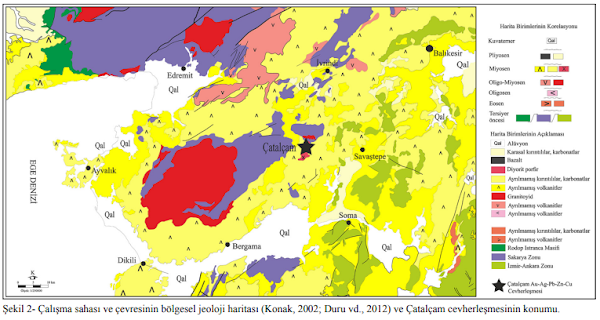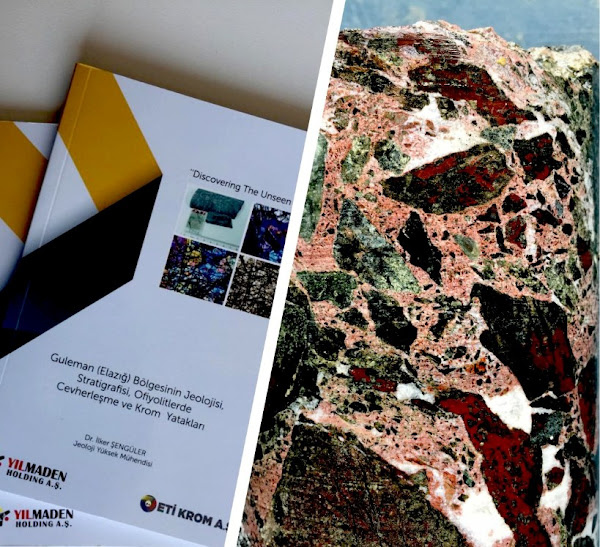Geochemical Evidence of the Lateritic Bauxite Deposits in the Sücüllü-Yalvaç Region (NE Isparta Angle, Southwestern Türkiye) with Emphasis on a Basic Source
Cengiz, O., Aydoğan, M.S. & Önal, B.Ç. Geochemical
Evidence of the Lateritic Bauxite Deposits in the Sücüllü-Yalvaç Region (NE
Isparta Angle, Southwestern Türkiye) with Emphasis on a Basic Source. Arab J Sci Eng (2025).
https://doi.org/10.1007/s13369-025-10791-w
Yayınlanma Tarihi: 5 Kasım 2025
he Sücüllü (Yalvaç-Isparta, SW Türkiye) lateritic bauxite
horizon lies directly on the alkali basaltic lavas (e.g. doleritic basalt)
occurring on the carbonate platform of Jurassic age. This horizon is associated
with thickness in the range of 5–30 m (average of 15 m) in the NW–SE
direction. Lateritic bauxite occurrences have dominant mineral assemblages of
clay (kaolinite, smectite), Fe-oxy-hydroxides (hematite, goethite), Al-rich
minerals (boehmite, gibbsite), feldspar, cristobalite, anatase, quartz, calcite
and dolomite. From bottom to top, lateritic profile is divided into 4 zones as
(1) weathered basaltic rock, (2) clayey laterite zone, (3) ferrigenous laterite
zone, (4) bauxite zone. Geochemically, lateritic bauxites have average values
of 26.04 wt% Al2O3, 19.77 wt% Fe2O3 and 29.48 wt% SiO2. Chemical analyses of whole rock samples and the
mineral assemblage suggest that coexisting minerals of lateritic bauxite are
highly aluminous and ferrigenous. Laterite and bauxite zones are typical with
weak-to-moderate lateritisation. High CIA values (~ 85.7), IOL values (up to
89.62), strong depletion of major elements (Si, Mg, Ca, Na, K) and
concentration of immobile elements such as Ti, Cr, Zr, Ga and REEs reflect that
the studied samples can be classified as lateritic bauxite, and formed through
intense chemical weathering of alkali basalt parent rocks, similar to the Payas
and Çarıksaraylar bauxites in southern Taurides (Türkiye), and in the
Darai-Daldali region of India. In respect of tectonic setting, these lateritic
bauxites occurred under hot-humid tropical climate dominated during upper
Cretaceous. Afterwards, formed lateritic bauxite materials were transported
into the sea on dolomitic limestones with erosion from a terrestrial
environment, and thin-bedded dolomitic limestones were deposited again on these
transported laterites in the marine environment.






Yorumlar
Yorum Gönder